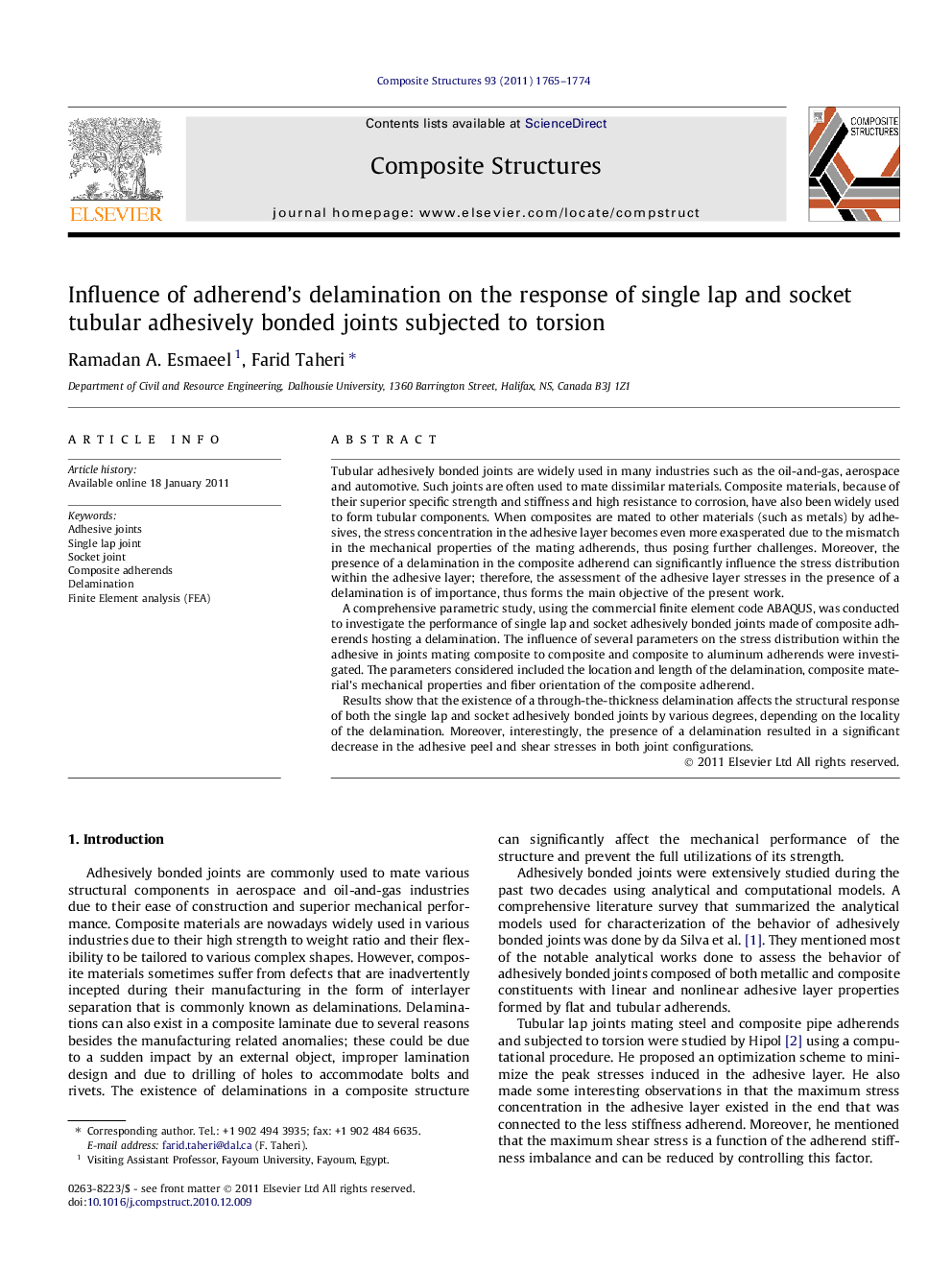| Article ID | Journal | Published Year | Pages | File Type |
|---|---|---|---|---|
| 252723 | Composite Structures | 2011 | 10 Pages |
Tubular adhesively bonded joints are widely used in many industries such as the oil-and-gas, aerospace and automotive. Such joints are often used to mate dissimilar materials. Composite materials, because of their superior specific strength and stiffness and high resistance to corrosion, have also been widely used to form tubular components. When composites are mated to other materials (such as metals) by adhesives, the stress concentration in the adhesive layer becomes even more exasperated due to the mismatch in the mechanical properties of the mating adherends, thus posing further challenges. Moreover, the presence of a delamination in the composite adherend can significantly influence the stress distribution within the adhesive layer; therefore, the assessment of the adhesive layer stresses in the presence of a delamination is of importance, thus forms the main objective of the present work.A comprehensive parametric study, using the commercial finite element code ABAQUS, was conducted to investigate the performance of single lap and socket adhesively bonded joints made of composite adherends hosting a delamination. The influence of several parameters on the stress distribution within the adhesive in joints mating composite to composite and composite to aluminum adherends were investigated. The parameters considered included the location and length of the delamination, composite material’s mechanical properties and fiber orientation of the composite adherend.Results show that the existence of a through-the-thickness delamination affects the structural response of both the single lap and socket adhesively bonded joints by various degrees, depending on the locality of the delamination. Moreover, interestingly, the presence of a delamination resulted in a significant decrease in the adhesive peel and shear stresses in both joint configurations.
